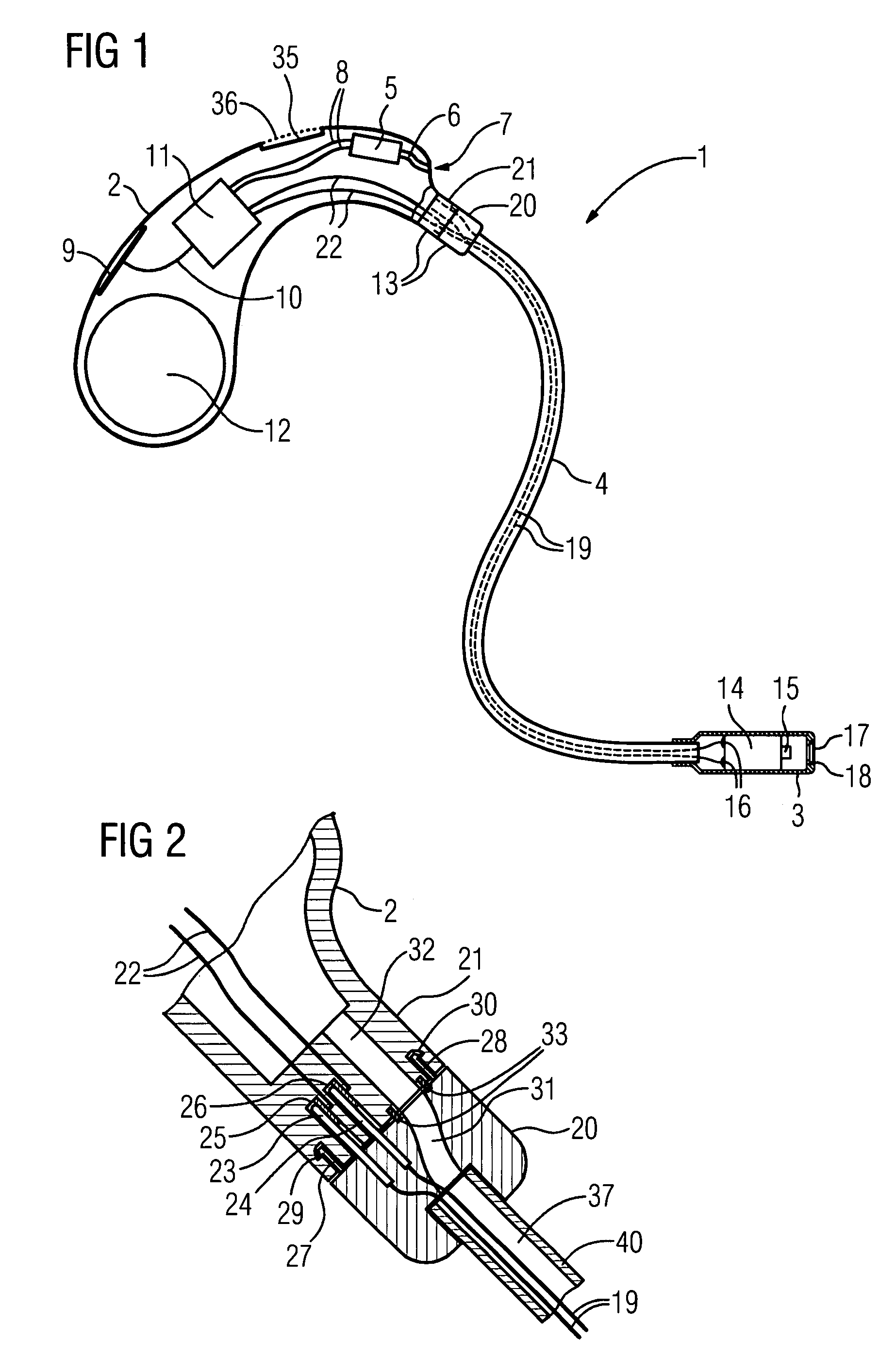Hearing aid device
a technology of hearing aids and receivers, which is applied in the direction of hearing aid vents, electrical equipment, loudspeaker spatial/constructional arrangements, etc., can solve the problems of heavy exposure of the ventilation boreholes of the receiver of this type to contamination, and achieve the effect of protecting against moisture and contamination
- Summary
- Abstract
- Description
- Claims
- Application Information
AI Technical Summary
Benefits of technology
Problems solved by technology
Method used
Image
Examples
Embodiment Construction
[0021]Externally, the hearing aid device 1 according to the exemplary embodiment is composed of the three segments; device element 2, earmold 3 and connecting piece 4. The device element 2 is designed to be worn behind the ear of a user and the earmold 3 with the receiver 14 contained therein is inserted into the auditory canal of the user when being worn. The earmold 3 is dimensioned such that it does not seal the auditory canal of the user. The hearing aid device 1 is thus designed for the “open supply” of the user. The device element 2 includes a microphone 5, which records an acoustic input signal by way of an acoustic channel 6 and a housing opening 7. In order to protect against contamination, the housing opening 7 can be provided with an air-permeable cover. The microphone 5 converts the acoustic input signal into an electrical input signal, which is fed to a signal processing unit 11 by way of electrical conductors 8. The processing and preferably frequency-dependent amplifi...
PUM
 Login to View More
Login to View More Abstract
Description
Claims
Application Information
 Login to View More
Login to View More - R&D
- Intellectual Property
- Life Sciences
- Materials
- Tech Scout
- Unparalleled Data Quality
- Higher Quality Content
- 60% Fewer Hallucinations
Browse by: Latest US Patents, China's latest patents, Technical Efficacy Thesaurus, Application Domain, Technology Topic, Popular Technical Reports.
© 2025 PatSnap. All rights reserved.Legal|Privacy policy|Modern Slavery Act Transparency Statement|Sitemap|About US| Contact US: help@patsnap.com



